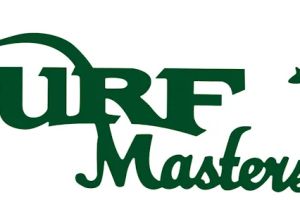
- Understanding-Crawlspace-Barriers
- Why-Crawlspace-Protection-Matters
- Types-of-Preventative-Barriers
- Step-by-Step-Guide-to-Installing-Barriers
- Common-Mistakes-to-Avoid
- Real-World-Success-Stories
- Expert-Tips-and-Recommendations
1. Understanding Crawlspace Barriers
A crawlspace might not be the most glamorous part of your home, but it plays a crucial role in maintaining your property’s health. Preventative barriers in crawlspaces act as physical shields against moisture, pests, and mold — three of the biggest threats to home foundations in the United States. Whether you’re a homeowner in a humid southern state or a colder northern region, learning how to use preventative barriers properly can save you from costly structural and pest-related damage.
These barriers are often made from durable materials like polyethylene plastic sheeting or reinforced vapor membranes, designed to prevent ground moisture and pests such as termites, rodents, and ants from infiltrating your home’s foundation. Proper installation ensures better indoor air quality, enhanced insulation, and long-term structural protection.
2. Why Crawlspace Protection Matters
2.1. Preventing Pest Infestations
Crawlspaces are a favorite entry point for pests. Rodents, termites, and cockroaches often use this space to access food sources and nesting areas. By installing preventative barriers, you eliminate potential access points and make your home less attractive to invaders. Professional pest control experts often cite vapor barriers as a critical part of an Integrated Pest Management (IPM) strategy for U.S. homeowners.
2.2. Reducing Moisture and Mold
Moisture buildup is one of the most common crawlspace problems. When left untreated, it can lead to wood rot, mold growth, and even respiratory issues for occupants. A properly sealed vapor barrier reduces humidity levels, preventing the conditions that attract pests and promote decay. Homeowners who maintain dry crawlspaces also enjoy lower energy bills and longer-lasting insulation.
2.3. Enhancing Home Value
A clean, moisture-controlled crawlspace increases property value. Home inspectors and buyers pay close attention to foundation conditions. Investing in preventative barriers not only safeguards your home but also demonstrates responsible maintenance — a major selling point in competitive housing markets.
3. Types of Preventative Barriers
3.1. Vapor Barriers
Vapor barriers are thick plastic or foil sheets that cover the ground and sometimes walls of a crawlspace. Their main purpose is to prevent moisture vapor from rising into the home. The best ones are at least 12 to 20 mil thick and reinforced with fiber mesh for durability.
3.2. Pest-Resistant Barriers
Some advanced barrier systems combine moisture control with pest resistance. These feature tightly sealed edges, metal mesh vents, or treated liners that deter termites and rodents. When paired with perimeter pest treatments, they create an almost impenetrable shield.
3.3. Insulating Barriers
In colder regions, insulating barriers can be installed on crawlspace walls to maintain stable temperatures and prevent condensation. These materials not only improve comfort but also reduce heating and cooling costs. Choosing the right insulation type depends on your local climate and foundation design.
4. Step-by-Step Guide to Installing Barriers
4.1. Inspection and Preparation
Before installation, inspect your crawlspace for leaks, mold, or pest activity. It’s essential to repair any damage before sealing the space. Clean the area thoroughly, removing debris, old insulation, and signs of rodent nesting.
4.2. Measuring and Cutting the Material
Measure your crawlspace dimensions accurately. Cut your barrier material into manageable sections that overlap by at least 6 to 12 inches at the seams. Use heavy-duty tape or specialized seam adhesive to seal overlaps tightly.
4.3. Securing the Edges
Attach the barrier securely to foundation walls or piers using mechanical fasteners or waterproof adhesive. Ensure no gaps remain along edges or around vent openings. Proper sealing is the difference between a protected crawlspace and one still vulnerable to moisture and pests.
4.4. Final Testing and Maintenance
After installation, check for any loose sections and monitor humidity levels using a digital hygrometer. Reinspect your crawlspace every few months to ensure the barrier remains intact. Annual maintenance prevents long-term deterioration and keeps your home protected.
5. Common Mistakes to Avoid
Many homeowners underestimate the importance of proper installation. A few common mistakes include using thin, low-quality plastic sheets, neglecting wall sealing, and ignoring drainage issues. Even the most durable barrier can fail if water accumulates under it. Always address external drainage before installing a vapor liner to prevent hydrostatic pressure buildup.
Another error is assuming that once a barrier is installed, no further inspection is needed. Crawlspaces are dynamic environments — soil shifts, humidity fluctuates, and pests look for new entry points. Regular monitoring is key to lasting protection.
6. Real-World Success Stories
A homeowner in Georgia reported that after installing a full vapor barrier and pest-resistant liner, their crawlspace humidity dropped by 60% within two weeks. Previously, they dealt with annual termite infestations and mold issues. After the barrier upgrade, both problems disappeared, improving air quality throughout the home.
In another case, a property manager in Florida installed preventative barriers in multiple rental properties and saw a dramatic reduction in maintenance costs and pest control visits. These real-life results demonstrate how a relatively small investment can yield long-term savings and peace of mind.
7. Expert Tips and Recommendations
Experts recommend pairing crawlspace barriers with dehumidifiers for maximum effectiveness, especially in humid climates. Choose professional-grade materials over DIY options when possible, as low-cost barriers often tear or degrade quickly.
For homeowners unsure where to start, PestControlHub offers detailed product comparisons, professional service recommendations, and installation guides for U.S. residents. Whether you’re sealing a small crawlspace or upgrading a commercial foundation, investing in a high-quality preventative barrier system is one of the best ways to protect your property from moisture, pests, and structural decay.









 Wildlife Resolutions4.0 (443 reviews)
Wildlife Resolutions4.0 (443 reviews) Pest Marshals of Toledo5.0 (2 reviews)
Pest Marshals of Toledo5.0 (2 reviews) LS Rodent Proofing & Pest Control Service5.0 (4 reviews)
LS Rodent Proofing & Pest Control Service5.0 (4 reviews) Best Termite & Pest Control4.0 (16 reviews)
Best Termite & Pest Control4.0 (16 reviews) Varment Guard Wildlife Services5.0 (28 reviews)
Varment Guard Wildlife Services5.0 (28 reviews) Pestban Inc4.0 (394 reviews)
Pestban Inc4.0 (394 reviews) How to Use Monitors to Detect Pest Entry: A Comprehensive Guide
How to Use Monitors to Detect Pest Entry: A Comprehensive Guide How to Predict Which Pests Will Invade Next – Smart Pest Forecasting for the U.S.
How to Predict Which Pests Will Invade Next – Smart Pest Forecasting for the U.S. How to Conduct a Pest Risk Assessment at Home – Expert Guide
How to Conduct a Pest Risk Assessment at Home – Expert Guide How to Block Pest Entry Around Deck Joists: Effective Solutions
How to Block Pest Entry Around Deck Joists: Effective Solutions How to Safely Use Fumigation Methods: A Comprehensive Guide for Homeowners
How to Safely Use Fumigation Methods: A Comprehensive Guide for Homeowners Why Pests Are More Active After Rain: Understanding the Link Between Weather and Pest Behavior
Why Pests Are More Active After Rain: Understanding the Link Between Weather and Pest Behavior